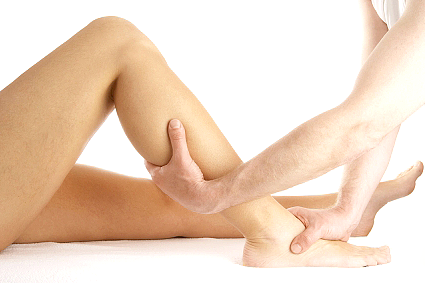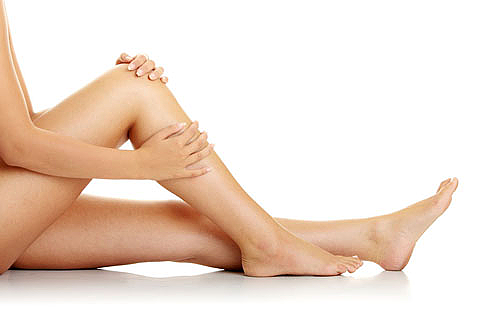Popular Articles
 Massage for Restless LegsIn This Article
Massage is considered a valuable tool for treating restless leg syndrome. We explore the types of massage and what the research says about massage therapy.
The main symptom of restless leg syndrome (and the main diagnostic criteria for RLS) is an overwhelming desire to move the legs characterized by some type of uncomfortable or painful sensations. Generally, RLS symptoms are relieved through movement. Some people choose to walk around. Others stretch or simply move their legs. Another method of relieving RLS is with a massage. Very little research has been conducted to understand how or why massage for restless leg syndrome is effective, but most experts strongly recommend considering massage both for relieving and preventing RLS. The Potential Effects of Massage for RLS
Similarly, during an episode of RLS, leg movement is known to relieve the disorder. However, some types of movements provide faster relief than others, and some are not effective at controlling the recurrence of RLS symptoms once the movement has stopped. Still, research is in agreement that both tactile and temperature stimulation appear to relieve the symptoms, and in some cases may prevent them from disrupting sleep. This is one of the proposed uses of massage – as a way of stimulating the legs to reduce RLS. How Does Massage Benefit Restless Legs?The best way to summarize the effects of massage on RLS can be found in a paper titled "Nondrug-related aspect of treating Ekbom disease, formerly known as restless legs syndrome." In it, the author describes some of the present beliefs about treating RLS, including massage. The author states: "Tactile and temperature stimulation, including massage or hot baths, can also be successful in decreasing symptoms associated with EKD.38,52 While many authors mention these modalities as potential treatment options and numerous websites recommend them, there is a paucity of scientific trials confirming their efficacy." This has been a problem with many potential RLS treatments, as very few have received a significant enough amount of research to claim they are truly effective – more so than a placebo. However, the author points to a case study that indicates that massaging RLS may be beneficial. The case study was conducted by a trained massage therapist. It was only for one patient – a 35-year-old woman suffering from RLS. The patient was given considerable massage therapy twice per week, with multiple types of therapy used. The patient then reported that there appeared to be a significant decrease in symptoms by as little as three weeks. This study is in favor of using massage therapy as a form of preventive therapy. Because it was only a case study, there is simply no way to know if massage therapy would be valuable to use on the larger population as a way of preventing the onset of RLS symptoms. Yet as one author notes:
It's also possible that massage itself "fixes" whatever is causing the muscles and nerves to require that level of stimulation. Massage is also relaxing, and both stress and anxiety do appear to affect RLS. The author notes, however, that after massage therapy is concluded, the symptoms often come back. Because of the lack of follow-up research, it's unclear what effect massage has on RLS if any. But there is substantial reason to believe that massage could be beneficial for at least temporarily relieving RLS symptoms or severity. Self-Massage to Reduce RLS
However, self-massage appears to be useful as a way to calm the muscles during an RLS attack, or right before you expect an RLS attack (if your legs are experiencing some degree of restlessness before bed). Once again, there are few (if any) studies into whether or not any specific type of restless leg massage is effective, so any type of self-massage may help. Some recommended types include:
Heated massages may also be beneficial, as this provides some of the additional temperature changes that many believe can reduce the symptoms of RLS. Also, if other areas of your body experience RLS symptoms, such as your arms, hands, hips, and feet, it may be worthwhile to massage these as well. It's unclear whether any self-massaging machines, such as massage chairs, have any effect on RLS. Using Massage to Prevent or Reduce RLSRestless leg massage is an area that still needs more research before any specific treatment can be recommended, and it's still unclear why massage appears to be beneficial in reducing restless leg. Massage therapy is believed to be effective for preventing episodes of RLS; although, this has only been shown in a single case study. Self-massage appears to be more beneficial for reducing the feelings of RLS as they occur and specific massage techniques may provide additional benefit in reducing RLS episodes as well. Regardless of their efficacy, massage is generally inexpensive and safe for most individuals. It's a good idea to discuss the idea with your doctor, but it may be beneficial to consider massage therapy as a potential treatment. Sourceshttp://www.ncbi.nlm.nih.gov/pmc/articles/PMC3101885/?tool=pmcentrez http://www.bodyworkmovementtherapies.com/article/S1360-8592(06)00148-3/abstract |
|||
| Next Article: RLS |





 Relieving RLS is complicated because the
Relieving RLS is complicated because the  Self-massage that is deep enough to prevent RLS is unlikely, as self-massage is inherently difficult and thus would not necessarily be enough to relieve RLS symptoms – at least more so than walking or running.
Self-massage that is deep enough to prevent RLS is unlikely, as self-massage is inherently difficult and thus would not necessarily be enough to relieve RLS symptoms – at least more so than walking or running.